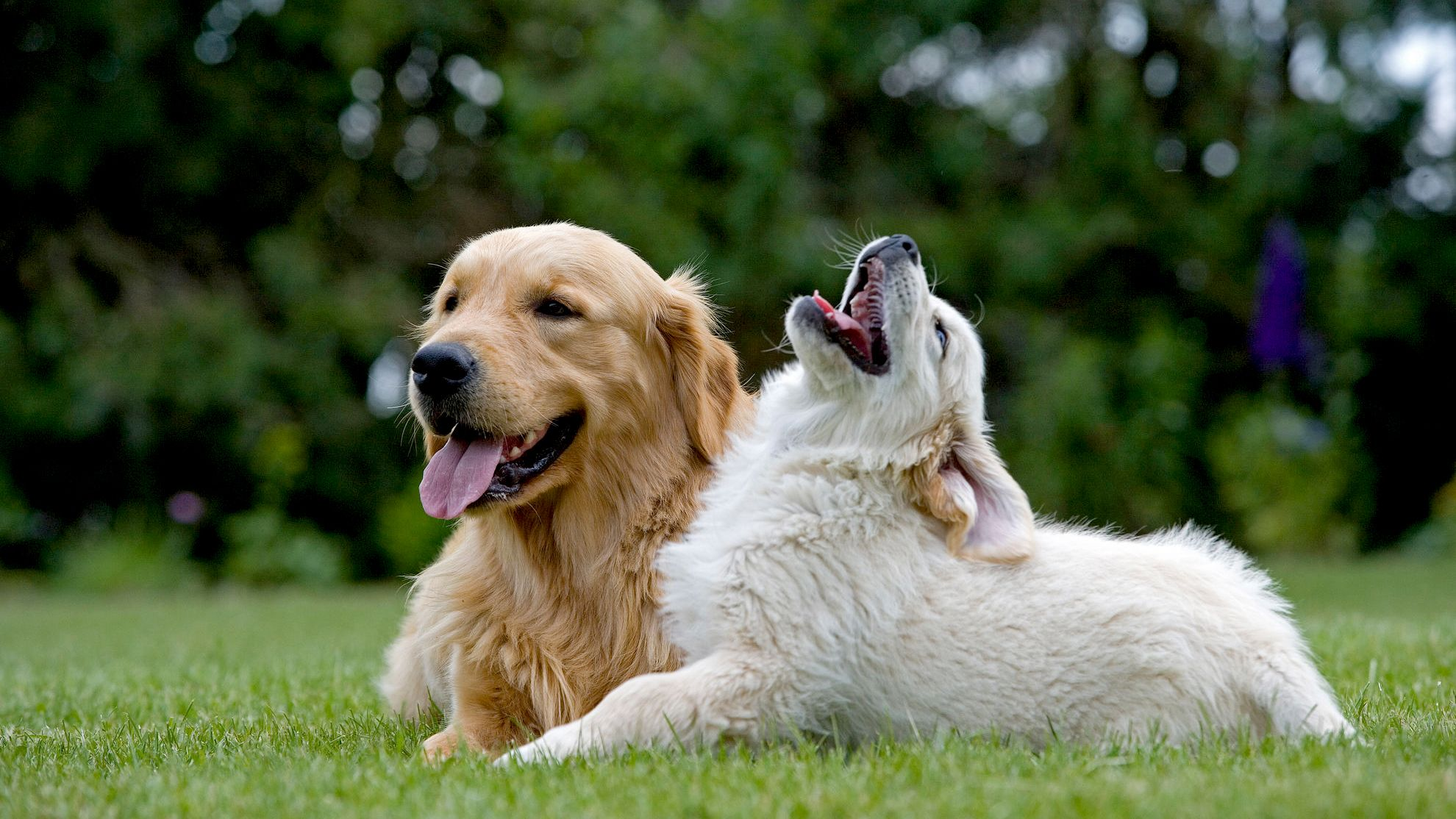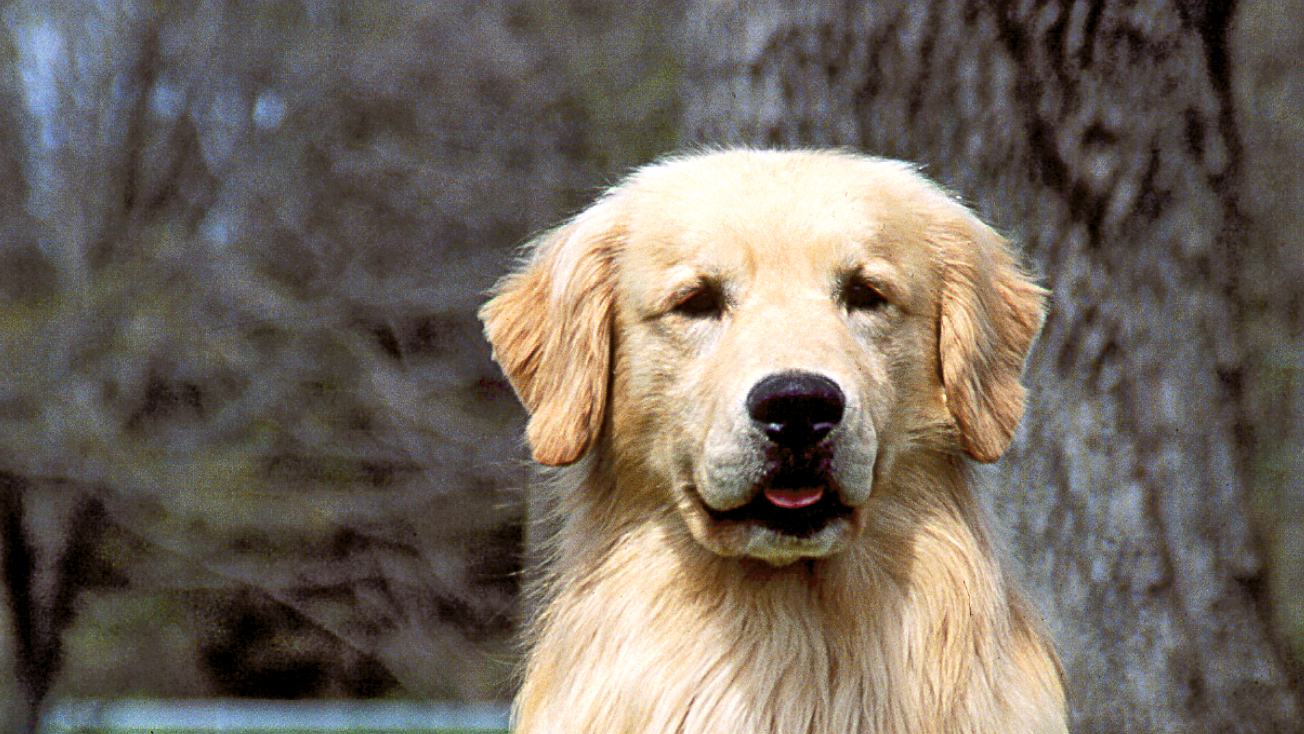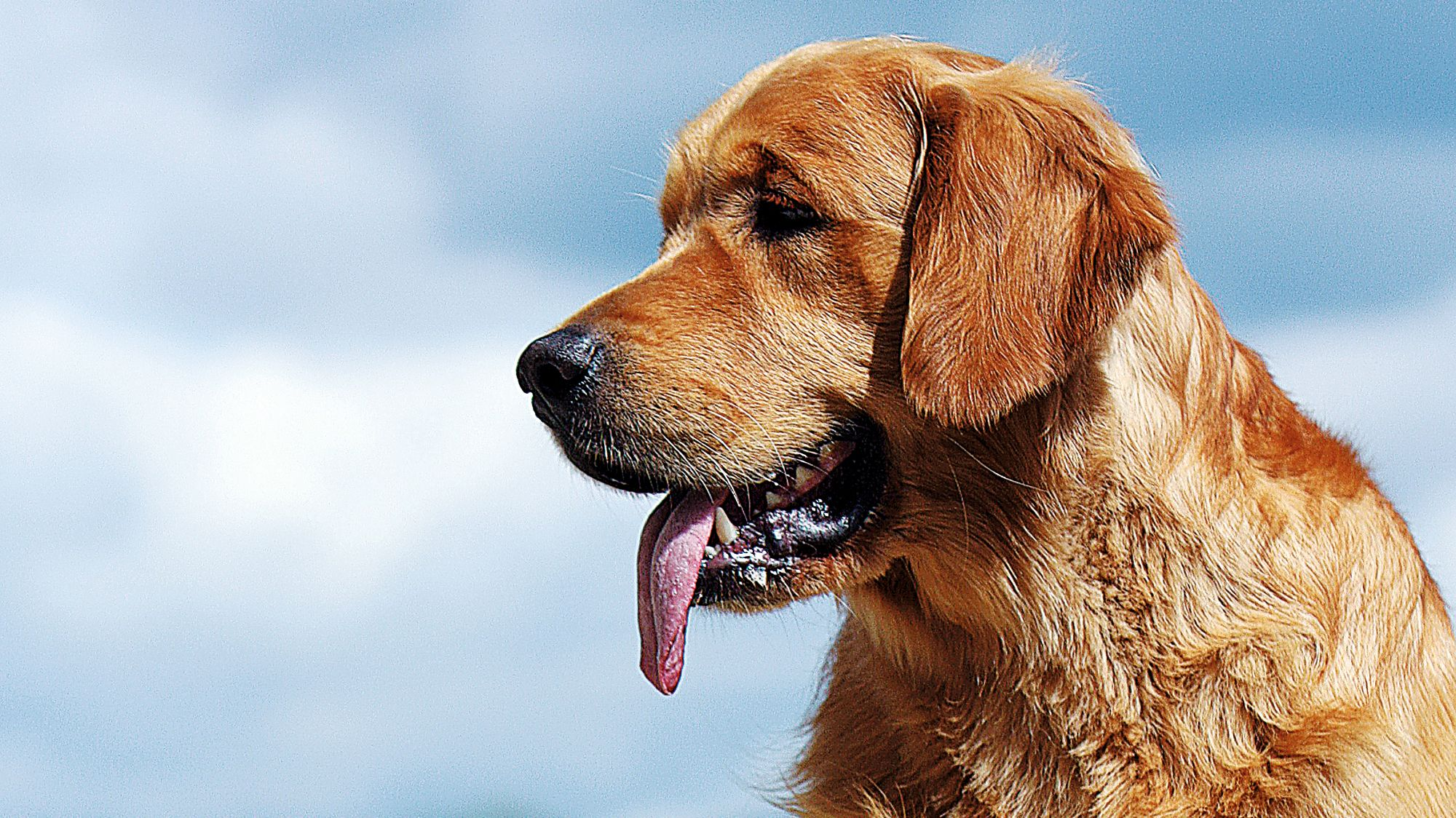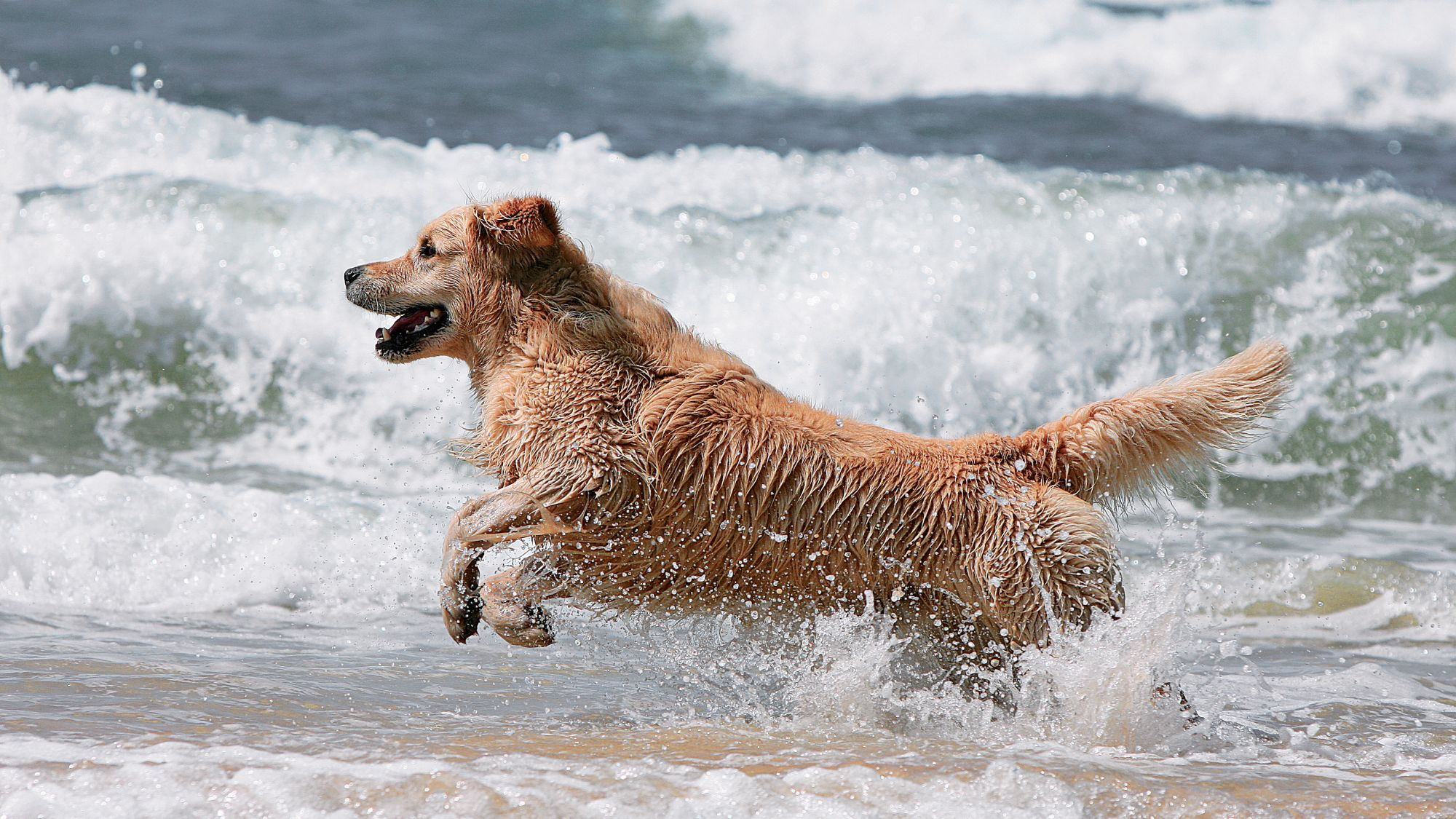Let's talk Golden Retrievers
The very definition of the words “bounding dog”, Golden Retrievers are full of joyful exuberance. Also a very gentle breed, however, they have an excellent temperament and are friendly and affectionate to all around them. As at home in the heart of the family as they are on a search-and-rescue mission or working as a guide dog, the Golden Retriever is a remarkably versatile breed, too. When you add in their golden good looks and robust constitution, it’s no surprise they are one of the world’s most popular dogs.
Official name: Golden Retriever
Origins: Scotland
Drooling tendencies
3 out of 5Grooming needs
3 out of 5Shedding Level
4 out of 5Barking tendencies
4 out of 5Energy level
3 out of 5Compatibility with other pets
4 out of 5Warm weather?
2 out of 5Cold weather?
3 out of 5Suited to apartment living
2 out of 5Can stay alone
2 out of 5Family pet
4 out of 5
| Male | Female |
|---|---|
| Height | Height |
| 56 - 61 cm | 51 - 56 cm |
| Weight | Weight |
| 30 - 34 kg | 25 - 30 kg |
| Life Stage | |
|---|---|
| Puppy | Adult |
| 2 to 15 months | 15 months to 5 years |
| Mature | Senior |
| 5 to 8 years | 8 to 18 years |
| Baby | |
| Birth to 2 months | |
Drooling tendencies
3 out of 5Grooming needs
3 out of 5Shedding Level
4 out of 5Barking tendencies
4 out of 5Energy level
3 out of 5Compatibility with other pets
4 out of 5Warm weather?
2 out of 5Cold weather?
3 out of 5Suited to apartment living
2 out of 5Can stay alone
2 out of 5Family pet
4 out of 5
| Male | Female |
|---|---|
| Height | Height |
| 56 - 61 cm | 51 - 56 cm |
| Weight | Weight |
| 30 - 34 kg | 25 - 30 kg |
| Life Stage | |
|---|---|
| Puppy | Adult |
| 2 to 15 months | 15 months to 5 years |
| Mature | Senior |
| 5 to 8 years | 8 to 18 years |
| Baby | |
| Birth to 2 months | |
Tailored nutrition for your Golden Retriever

Get to know the Golden Retriever
All you need to know about the breed
With their bright and bouncy demeanour, it’s hard to believe that the Golden Retriever was originally bred as a finely-honed gun dog. Today, they are rather better known for their loyal and faithful temperament, that lovely lolloping stride and their glorious golden coat. The Golden Retriever also has a playful, puppyish side to their personality, even as an adult.
That said, they do retain some of the qualities from their former hunting days. Known for their great sporting and working prowess, Golden Retrievers have excellent tracking abilities. As such, they are often utilized by search-and-rescue teams in the hunt for missing people. At the same time, their gentle temperament makes them ideal as guide dogs for the blind or visually impaired persons. They make good therapy dogs too.
One thing they definitely aren’t, however, is a watchdog. In fact, they’re more likely to wag their tails at an intruder than anything else!
Most of all, though, Golden Retrievers are perhaps best known as a cherished family pet. Great with children and other animals once trained, they form deep bonds with their human families – and the feeling is mutual. Along with German Shepherds and Labradors, Golden Retrievers are frequently cited as one of the three most popular breeds in the world.
In terms of their appearance, Golden Retrievers have a thick, water-resistant coat with a dense undercoat. This can vary in colour from a pale gold to a deeper amber shade and everything in-between. The one constant is that it is very thick, and built to withstand the elements. But this does mean it requires a fair bit of grooming. Golden Retrievers are also known for being quite a high-shedding breed.
With their hunting-dog background, Golden Retrievers do need a fairly high level of daily exercise too – whether that’s a walk, a jog or running after a ball. Retriever by name, retriever by nature, they like nothing better than fetching an object and bringing it back to you. So, if you can indulge your Golden Retrieverin this, they’ll be your number one fan.

Two facts about Golden Retrievers
1. 101 Retrievers
In July 2006, the Golden Retriever Club of Scotland organized a gathering at the ancestral home of the breed. During the event, a photo was taken – and, with 188 dogs, it is believed to hold the record for the most Golden Retrievers in one picture.
2. A dog’s dinner
This is a breed that loves to eat! As a result Golden Retrievers can easily become overweight. It is important, therefore, to keep treats to a minimum and be sure to opt for a high-quality, low-fat food. For more facts on the best diet for the Golden Retriever, see below.
History of the breed
The origins of the Golden Retriever date back some 200 years. To discover the breed’s story, we need to head to the Scotland of the 19th century. There, we meet a Scottish aristocrat called Lord Tweedmouth and his Yellow Retriever named Nous.
In 1865, this keen hunter decided that he wanted to create a gundog that could cope with the tough terrain and harsh climate. So, he crossed his Yellow Retriever with the now extinct Tweed Water Spaniel, and added the Irish Setterand Bloodhound into mix. As he kept careful notes of his findings, we have the full history of the Golden Retriever.
The early Golden Retrievers were first shown in England in 1908 and recognized by the Kennel Club there in 1911. At that point, however, they were classified as a ‘Retriever – Yellow or Golden’. Following the creation of the Golden Retriever Club, in 1913, the name was changed in line with that. The Golden Retrieverwas inaugurated by the American Kennel Club in 1925.
Today, they are one of the most popular dog breeds across the world – though, interestingly, there are actually three different types of Golden Retriever: the English, Canadian and American. However, as there are only subtle differences between them, they are all classed as the same breed.
From head to tail
Physical characteristics of Golden Retrievers
1.Ears
2.Face
3.Fur
4.Body
5.Tail

Things to look out for
From specific breed traits to a general health overview, here are some interesting facts about your Golden Retriever
Be sure to check their ears regularly
Among the more common afflictions that can affect the Golden Retriever is a condition called ‘otitis’ – otherwise known as ear infections. This is often caused by an allergy and can be painful and itchy for the dog. In more serious cases, it can also result in hearing damage. As a result, ears should be checked weekly for any sign of infection and, in the event of anything unusual, your Golden Retriever should be taken straight to your veterinarian. Professional examinations are also recommended at least twice a year.
They can also experience joint complaints
Like a number ofother dog breeds, Golden Retrievers have a genetic predisposition to something called hip dysplasia – a condition in which the ball and socket become out of kilter. This can lead to pain and inflammation and also result in arthritis later on in the dog’s life. However, the condition can be managed, so have a chat with your veterinarian about the options available. For example, if your Golden Retriever is carrying excess weight, this can magnify the condition, so it’s important that they have a carefully balanced diet. In severe cases, surgery can also be an option.
Be aware of any changes in their body
Unfortunately, Golden Retrievers can also be susceptible to several types of cancer – including lymphoma, hemangiosarcoma and mast cell tumours.
As early detection is key, it’s important to keep an eye out for any unusual symptoms – in-particular any lumps and bumps, obvious pain or laboured breathing. Your Golden Retriever’s grooming sessions can be a good opportunity to give your dog the once-over. Unfortunately, if an internal organ is affected, it can be much harder to spot. So if your Golden Retriever seems a bit off-colour, refuses to eat or loses weight, have them checked. Comprehensive examinations with your veterinarian are also recommended at least twice a year.

Caring for your Golden Retriever
Grooming, training, and exercise tips
As former gundogs, Golden Retrievers require plenty of outdoor exercise, so adult dogs should be getting at least an hour a day – but ideally two or more. If they don’t have enough exercise, Golden Retrievers can become a little bit boisterous, so, a good long walk or run will help them to burn off any excess energy. Conversely, some dogs, given the opportunity, will quite happily turn into couch potatoes, which can lead to weight gain, so exercise is important all-round. Given the breed’s hunting heritage, Golden Retrievers usually enjoy fetching and swimming, so it’s worth being a bit creative with their activity programme.
One of the few – only? – catches of having a Golden Retriever is that their long coats can require a fair bit of maintenance. Especially as they love nothing better than tearing through muddy fields, rolling in a puddle or enjoying a swim (which, by the way, they are a big fan of). In addition, Golden Retrievers are prone to shedding quite profusely. They should therefore be brushed at least twice a week, and daily during the moulting seasons. Their coat should also be checked after their walks, to make sure nothing is tangled in their fur, and they will need regular baths to keep them smelling sweet. Trimming their nails, checking their ears and brushing their teeth should all be done regularly too.
A smart and intelligent breed, Golden Retrievers are also eager to please – so this makes training a pleasant experience for both dog and owner alike. As they’re also very food-motivated, treats can be an extra enticement – as long as they are healthy ones! Think about taking treats from their daily food portion. Start your Golden Retriever early with regular socialization and puppy-training classes and they’ll soon get the hang of things. Also renowned for their excellence in agility and obedience classes, many go on to excel in the show ring. Your Golden Retriever’s training can also be supported with regular games back at home – another good bonding opportunity.
As former gundogs, Golden Retrievers require plenty of outdoor exercise, so adult dogs should be getting at least an hour a day – but ideally two or more. If they don’t have enough exercise, Golden Retrievers can become a little bit boisterous, so, a good long walk or run will help them to burn off any excess energy. Conversely, some dogs, given the opportunity, will quite happily turn into couch potatoes, which can lead to weight gain, so exercise is important all-round. Given the breed’s hunting heritage, Golden Retrievers usually enjoy fetching and swimming, so it’s worth being a bit creative with their activity programme.
One of the few – only? – catches of having a Golden Retriever is that their long coats can require a fair bit of maintenance. Especially as they love nothing better than tearing through muddy fields, rolling in a puddle or enjoying a swim (which, by the way, they are a big fan of). In addition, Golden Retrievers are prone to shedding quite profusely. They should therefore be brushed at least twice a week, and daily during the moulting seasons. Their coat should also be checked after their walks, to make sure nothing is tangled in their fur, and they will need regular baths to keep them smelling sweet. Trimming their nails, checking their ears and brushing their teeth should all be done regularly too.
A smart and intelligent breed, Golden Retrievers are also eager to please – so this makes training a pleasant experience for both dog and owner alike. As they’re also very food-motivated, treats can be an extra enticement – as long as they are healthy ones! Think about taking treats from their daily food portion. Start your Golden Retriever early with regular socialization and puppy-training classes and they’ll soon get the hang of things. Also renowned for their excellence in agility and obedience classes, many go on to excel in the show ring. Your Golden Retriever’s training can also be supported with regular games back at home – another good bonding opportunity.
7/7
All about Golden Retrievers
While it’s true that there is only one breed of Golden Retriever, there are three different sub-types within that: the English, Canadian and American. In general, English Golden Retrieverstend to have a stockier build and a lighter-coloured coat than the others. Conversely, Canadian and American Golden Retrievers have a similar frame to each other but Canadians have a thinner coat. And a different accent when they bark, of course.
While Golden Retrievers can cope better than some breeds when left alone, they actually like nothing better than hanging out with their human family. Also, if separated from them for too long or too frequently, separation anxiety can occur – as with any breed. This can lead to barking, howling and destructive behaviour. So, in summary, it’s best to leave your Golden Retrieveras little as possible. As with any dog, really.
Read more on this topic
Sources
- Veterinary Centres of America https://vcahospitals.com/
- Royal Canin Dog Encyclopaedia. Ed 2010 and 2020
- Banfield Pet Hospital https://www.banfield.com/
- Royal Canin BHN Product Book
- American Kennel Club https://www.akc.org/
Like & share this page